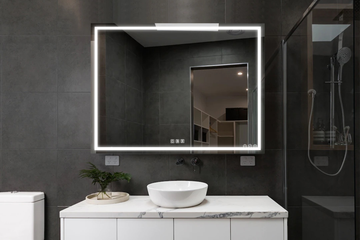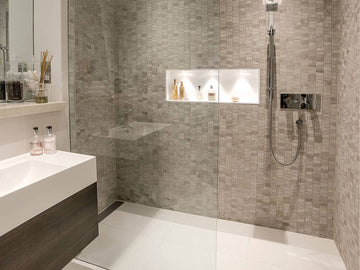

Why Does The Bathroom Sinks Become Smelly?
Smelly sinks are usually caused by a buildup of bacteria from grease, fat and food that have been flushed down the drain. These bacteria will then get stuck in the pipes, causing the familiar rotten egg smell. In bathrooms, a smelly sink is often caused by stray hairs that become trapped in the soap scum that begins to drain down the drain.
A bustling family home with a well used bathroom can often cause the bathroom sink smelly. Fortunately, a sink that smells like rotten eggs can be easy to resolve. Here are a few simple tips on how you can do just that.
How To Fix A Smelly Bathroom Sink
To stop your bathroom sink from smelling, you will need to remove any clogs which are causing the smell. Here are our top methods to clean your drains and get rid of that nasty rotten egg smell.
Using Boiling Water
Boil a pot of hot water, then pour the boiling hot water down the drain. Wait 5 minutes and then pour in an equal amount of cold water. This should force any remaining grease to solidify and hopefully clear the blockage and the smell.
Using White Vinegar
Another simple way to clear your sink drain is with a small amount of white vinegar. Pour a cup of white vinegar down the drain, let it stand for 30 minutes, then rinse with hot water.
Using A Plunger

Using a plunger can also help clear a smelly drain. Simply place the plunger cup over the basin drain and pump vigorously up and down for at least a minute to remove any small blockages. Finally, repeat the boiling water flush to remove any remaining congealed build up. Be sure to have your plunger handy just in case!
Using Caustic Soda

Caustic Soda, (Sodium Hydroxide) is also very effective for unblocking sinks and plug holes. Caustic Soda has fantastic degreasing properties meaning it can break down grease and fat, which are the most common cause of a blocked drain. To unblock a sink using Caustic Soda, we would recommend using a solution of around 10%. To create a 10% solution of Caustic Soda, simply dissolve 100g of (Caustic Sosa) Sodium Hydroxide crystals into 1 litre of water. Simply pour the 10% solution down the drain and let it get to work, it is recommended to leave caustic soda to work its magic for around half an hour to break down any deposits in the sink. When 5 minutes has passed, slowly run some water into the sink, increasing the water pressure. If it isn’t clear, repeat the process of creating a solution and pouring it down the sink until the drain appears to be clear. Caustic Soda can also be used to effectively unblock plug holes, outdoor drains and toilets.
Check The U-Bend
If these methods do not resolve the issue, it may be that there is a blockage in the U-Bend of your sink. U-bend traps, or waste pipes, are found underneath the plug hole of bathroom basins and baths. A U-Bend waste tube is usually filled with water to prevent drain odours from escaping. The easiest way to clear an obstructed U-Bend is to remove any blockages from it. This can be done by carefully removing the u-bend pipe using a wrench and emptying the containing water. With the aid of a wire brush and a flush of warm water any remaining residue can be easily swept away.
How to Prevent Your Sink Smelling
To avoid a blocked sink the rule of thumb is to be careful as to what you put down your drain and take regular action to clear any small deposits that might be forming. Using some filters for keeping hair, soap scum and other solids from making their way into the drain are ideal. Never pour grease down your drain and to remove grease from pots and pans simply wipe with a paper towel before rinsing.
The above methods every week or two should prevent the drains in your home from developing any nasty residue that can congeal and form an unpleasant smell. If a smelly drain is something of a persisting issue, it might be worth seeking professional advice from a plumber as it could be due to an external issue rather than an internal issue.




